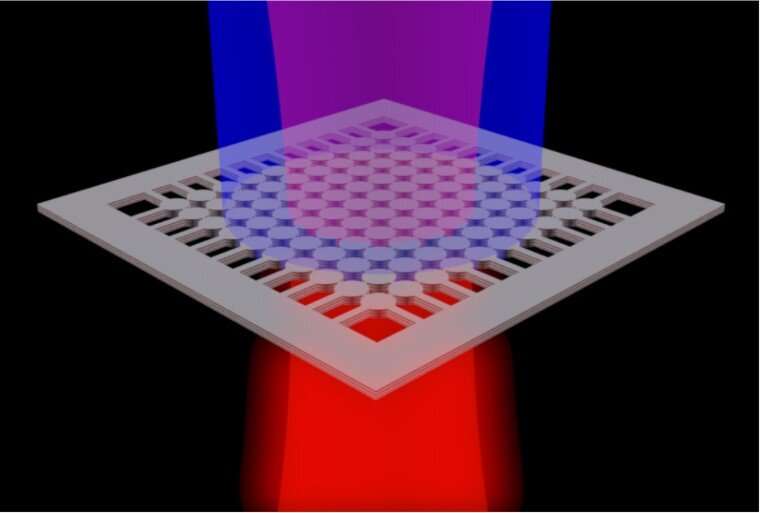Making lasers more efficient, versatile and compact

Their inner workings reside in the realm of physics, but lasers make everyday life possible. Talking on a cell phone or googling COVID stats while your apples and oranges are scanned at the checkout counter—lasers at every step.
Lasers emit intense light at specific wavelengths. At one wavelength, laser beams etch patterns on computer chips that define their circuitry. At telecom wavelengths, lasers fire the enormous volumes of data through optical fibers that make ours the information age.
In 2017, a new kind of laser invented by electrical engineer Boubacar Kante, Ph.D., was recognized as one of the breakthrough inventions of the year by Physics World. With his Bakar Fellows support, Kante is preparing to fabricate a prototype of the new laser and demonstrate its potential for a range of applications from microsurgery to satellite telemetry.
Boubacar, an associate professor of electrical engineering and computer sciences, describes the novel capabilities of the new laser technology.
Q. Lasers have so many applications, from the micro to macro scale. How big a role do they play in today's economy?
A. Lasers are a $10 to $20 billion market. We're talking on Zoom right now because pulses of laser light are transmitting the back and forth through optical fibers at, well, the speed of light. They can carry much more data and are faster than any other mode of communication.
Laser beams can burn bits of tissue in cataract surgery. Lasers are the key to advancing drone and autonomous car navigation.
Q. What would your invention add to a laser's capabilities?
A. They are thousands of times smaller than a typical laser—as small as the width of a human hair yet capable of emitting lots of power. So, they are more compact and lighter. If things are smaller, information travels a shorter distance and can travel faster. So, the lasers need less energy to work. They are more energy efficient.
Q. What other properties make this new laser technology more useful?
A. Usually, when things become more compact, they lose some functionality. It is the opposite that happens with our lasers. Lasers emit light at precise wavelengths—think of them as different colors—and because of the precision, the wavelengths can be tightly packed. Most lasers emit light at only one wavelength. But our invention allows the laser to be "tuned" to different wavelengths. This is known to increase the flexibility and capacity of networks. Wavelength tunability can also serve in metrology and in sensing.
We can also steer the laser beam, i.e. change the angle at which light is emitted. Currently, when a satellite or, say a driverless car or a drone needs to direct the laser beam in a different direction, the laser must be turned mechanically. This naturally limits the speed and makes the system bulky. The laser we are developing can emit light without rotating the system and the angular tuning can be done electronically.
So, the laser is light, ultra-compact, tunable in both wavelength and direction. It is energy efficient and would be less expensive to manufacture at scale than current mechanically controlled lasers.
Q. So, let's look under the hood. What accounts for the new laser's versatility?
A. Essentially, lasers emit light from a box, analogous to a microwave. A semiconductor generates the light initially. To build up the light intensity—to make a laser beam—the light is confined for a long time and made to bounce around inside the box. The box must contain the light and prevent it from escaping.
We have invented a different way to contain light while it increases in intensity. We allow light of a precise wavelength to escape the box via at least two channels. When the escape waves interact, they can cancel each other out. It's called destructive interference. The escaped light adds up to zero.
Everything works then as if the box was closed, and we have made a unique cavity. The versatility of this wave trapping mechanism allows the laser to be lightweight, tunable in wavelength, and steerable.
Q. What steps do you need to take now to move from the invention stage into a commercial instrument?
A. The technology to push a discovery into the manufacturing phase is very costly. The Bakar Fellows funding will allow us to manufacture a protype in the Marvell Nanofabrication lab at Berkeley. It includes a "clean room" where pollutants like dust and aerosol particles are filtered out. The Bakar support will support the initially costly process. I hope that in two to three years from now the value of our invention will attract commercial attention.
Provided by University of California - Berkeley




















